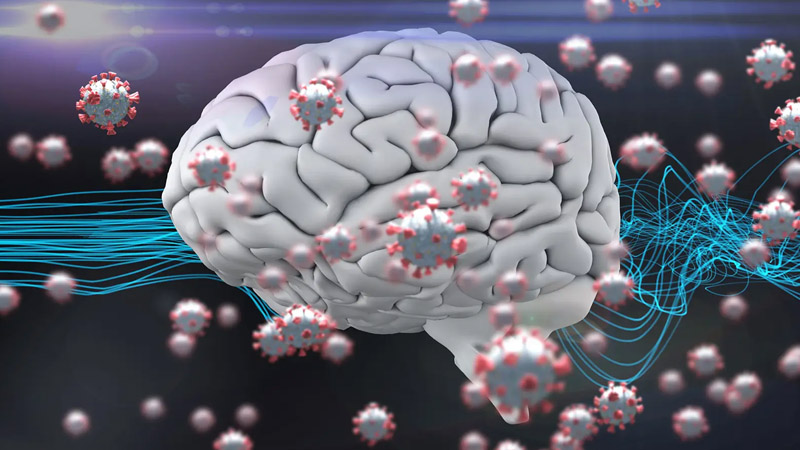Patients with the functional neurologic disorder (FND) after SARS-CoV-2 infection had different symptoms than people with FND after COVID vaccines, retrospective data showed. Patients with post-COVID FND tended to be older, had more insidious onset, and had a higher disability, according to Araceli Alonso-Canovas, MD, Ph.D., of Hospital Universitario Ramón y Cajal in Madrid, and co-authors.
Those with FND after COVID vaccination more closely resembled classic FND: they were younger, had an acute onset, and tremor was the most common phenotype, the researchers reported in the Journal of Neurology, Neurosurgery & Psychiatry opens in a new tab or window.
“We show for the first time evidence from a multicenter national study that FNDs after COVID-19 infections and vaccines are more common than previously reported and have distinct clinical profiles,” Alonso-Canovas told MedPage Today. The findings point to a need to consider FND when diagnosing patients with post-COVID neurologic symptoms, she added.
“Long COVID is an umbrella term and many different circumstances have to be considered,” Alonso-Canovas said. “If there are neurological symptoms, a careful history and examination are mandatory to rule out FND, as it is a well-defined clinical condition that is potentially treatable.”
FND refers to disorders caused by an abnormality in brain signaling that opens in a new tab or window with no significant structural brain damage. It occurs in an estimated four to 12 people per 100,000 per year and accounts for about 6%opens in a new tab or window of outpatient neurology visits.
Vaccinations can trigger FNDopens in a new tab or window, as can other stressors including infections. While experts maintain some people with FND might be long COVID patients, little research has been conducted opens in a new tab or window to evaluate this.
“Long COVID can manifest with a range of features diagnostic of FND,” noted Alberto Espay, MD, MSc, of the University of Cincinnati, who wasn’t involved with the study. “If the neurological examination is not searching for these features, the diagnosis will be missed,” Espay told MedPage Today. “Given the therapeutic implications, ascertaining the functional subtype of long COVID is imperative.”
“It is possible that remote effects from SARS-CoV-2 infection, rather than the presence of the coronavirus in the brain directly, may affect networks involved in the generation of FND, lowering the threshold for functional manifestations to appear,” he added.
Alonso-Canovas and colleagues reviewed clinical records from March 2020 to November 2022 in eight tertiary university hospitals, focusing on FND patients who had SARS-CoV-2 infection or COVID vaccines as main precipitant factors. FND diagnosis was performed by an expert, based on the clinical history and positive motor or sensory signs on examination. Disability was defined as the inability to work due to symptoms or disability to perform daily living activities.
A total of 46 patients were included in the study, 33 people in the post-COVID FND group (72%) and 13 people in the post-vaccine FND group (28%). Overall, 78% were women. The phenotype was purely motor in 65% of FND patients and mixed sensorimotor in 32%. One patient had isolated sensory syndrome. Fatigue (72%), pain (57%), and cognitive difficulties (30%) were common.
People in the post-COVID group were older (46 vs 35 years in the post-vaccine group) and had higher disabilities (76% vs 31%, respectively). The post-COVID group also trended toward having more men (24% vs 15%), more people with previous psychological difficulties (50% vs 23%), and less frequent abrupt FND onset (38% vs 62%).
In the post-COVID group, 58% had previously received a long COVID diagnosis, and FND symptoms started within the convalescence period in 87% of patients. In the post-vaccine group, FND symptoms started within 1 week after vaccination in most cases.
Overall, 22 FND patients (48%) required treatment with psychiatry or psychology specialists, 15 (33%) needed physical therapy and one needed speech therapy. After a mean follow-up of 14 months from onset, 46% had improved, 39% remained stable, and 9% had worsened. Three patients were unavailable for follow-up after diagnosis.
Long COVID lacks a consensus definition, diagnostic criteria, biomarkers, and a clear underlying pathology, Alonso-Canovas and colleagues noted. “In this context of uncertainty, a guiding principle should be that not all patients with post-COVID-19 symptoms necessarily have long COVID, and a broad differential diagnosis should be considered,” they wrote. “More than half of our post-COVID FND patients had been diagnosed as long COVID, so it should be definitely included in the differential diagnosis,” Alonso-Canovas pointed out.
The study has several limitations, including its small sample size and retrospective nature, Alonso-Canovas and co-authors acknowledged. Only patients with motor or sensory positive signs on exam were included in the analysis, so selection bias was likely. In addition, participants were recruited largely from FND clinics. “This likely leads to an underestimation of FND after COVID-19 infection and SARS-CoV-2 vaccines,” the researchers wrote.



